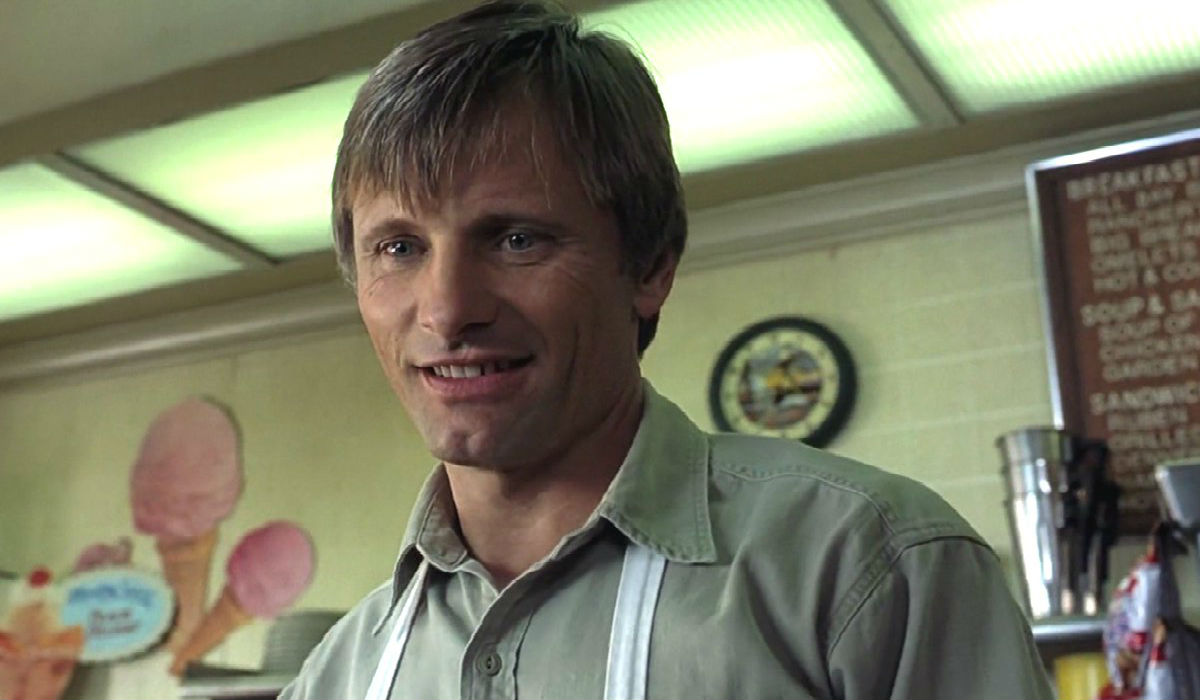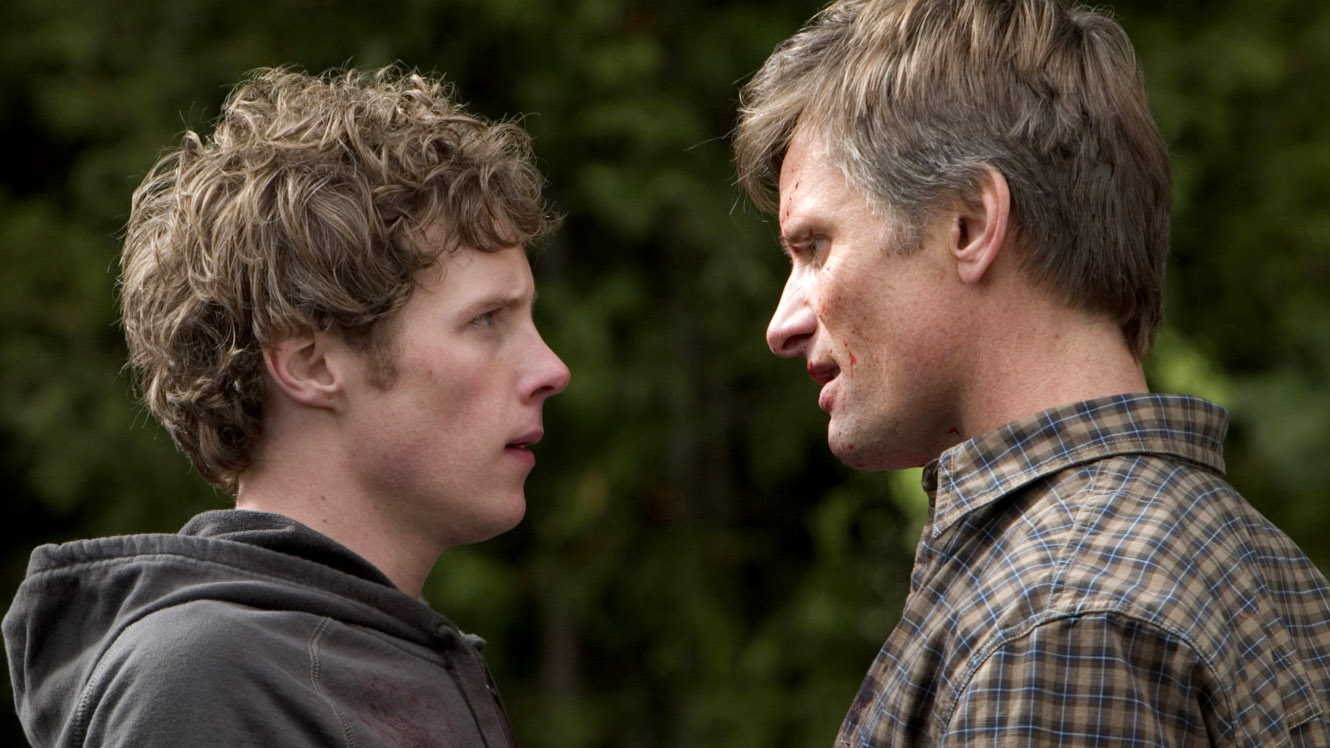A History of Violence (2005)

A History of Violence (2005), directed by David Cronenberg, is a gripping thriller that explores the dark and inescapable ties between violence, identity, and morality. Adapted from the graphic novel by John Wagner and Vince Locke, the film stars Viggo Mortensen as Tom Stall, a small-town diner owner whose quiet life is upended by an act of heroism that thrusts him into the national spotlight—and back into a past he thought he had left behind. Mortensen’s nuanced performance anchors this tense and deeply human story, while Cronenberg’s direction turns a seemingly simple narrative into a complex meditation on human nature and the cost of violence.
The story begins in the idyllic town of Millbrook, Indiana, where Tom lives with his loving wife, Edie (Maria Bello), and their two children. Their peaceful lives are shattered when two violent criminals attempt to rob Tom’s diner. In a shocking display of skill and brutality, Tom kills the would-be robbers, saving his customers and becoming a local hero overnight. However, this act of self-defense draws the attention of dangerous figures from Tom’s past, including the sinister Carl Fogarty (Ed Harris), who claims that Tom is actually “Joey Cusack,” a notorious mobster from Philadelphia. Tom’s denial of his past becomes increasingly strained as the violence from his former life encroaches upon his present.
Viggo Mortensen delivers a powerhouse performance as Tom/Joey, embodying a man torn between his peaceful family life and the violent persona he once inhabited. Mortensen’s portrayal subtly shifts throughout the film, revealing hints of the brutality and ruthlessness that lie beneath his calm exterior. His internal struggle is palpable, as he tries desperately to suppress the violent instincts that once defined him. Mortensen’s performance is complemented by Maria Bello, who gives a standout portrayal of Edie, a woman grappling with the horrifying realization that her husband may not be who she thought he was. Bello captures Edie’s turmoil, love, and growing disillusionment as she confronts the dark truth about her husband’s past.
The tension escalates when Carl Fogarty and his men arrive in Millbrook, determined to force Tom to acknowledge his past as Joey Cusack. Ed Harris is chilling as Fogarty, bringing an air of menace and dark humor to the role. His interactions with Mortensen are fraught with psychological tension, as Fogarty’s presence slowly peels away the facade that Tom has carefully constructed. The clash between Tom and Fogarty is not just a physical confrontation but a battle over Tom’s true identity and whether it is possible to truly leave a violent past behind.
David Cronenberg’s direction in A History of Violence is precise and unflinching. Known for exploring the darker aspects of human nature and body horror, Cronenberg brings a visceral intensity to the film’s depiction of violence. The film’s brutal scenes are sudden, raw, and unglamorous, emphasizing the physical and emotional consequences of violence. Cronenberg does not shy away from showing the aftermath of each act, highlighting how violence leaves lasting scars on those who commit and witness it.
The film also delves into complex themes, such as the nature of identity, the allure and horror of violence, and the struggle for redemption. Tom’s past as Joey represents a darker, primal part of himself that he has worked hard to bury, but which surfaces in moments of extreme stress and danger. As the film progresses, it becomes clear that Tom’s attempt to escape his violent past is both a personal and societal struggle. The story raises questions about whether people can truly change or if they are forever defined by their past actions.
The relationship between Tom and Edie is a central aspect of the film, providing both its emotional core and some of its most harrowing moments. Their marriage, once a symbol of stability and trust, is tested by revelations of Tom’s past. A scene in which they argue and later make love with a mix of anger, passion, and despair is one of the film’s most memorable and raw moments, capturing the complexity of love, betrayal, and desire.
In addition to its exploration of personal and familial conflict, A History of Violence reflects on broader societal themes, such as the American mythos of heroism and the thin line between heroism and brutality. Tom’s transformation from local hero to a man with a dark, violent history mirrors society’s fascination with and revulsion toward violence. The film’s title itself invites viewers to question whether violence is an intrinsic part of human history and identity, and whether it is ever possible to break free from its cycle.
The final act brings Tom face-to-face with his past in a climactic confrontation with his brother, Richie (played by William Hurt in an Oscar-nominated performance). Richie’s appearance is brief but impactful, providing a stark reminder of the life Tom left behind and the violence that still defines him. The tense and bloody showdown underscores the inescapability of Tom’s past and the cost of trying to suppress it.
In conclusion, A History of Violence is a masterfully crafted thriller that transcends genre conventions to become a profound exploration of identity, morality, and the consequences of violence. Viggo Mortensen, Maria Bello, and Ed Harris deliver outstanding performances, while David Cronenberg’s direction ensures that every moment of tension and violence resonates deeply. The film leaves audiences questioning the true nature of identity and whether it is possible to escape one’s past—a testament to its depth and enduring impact.











